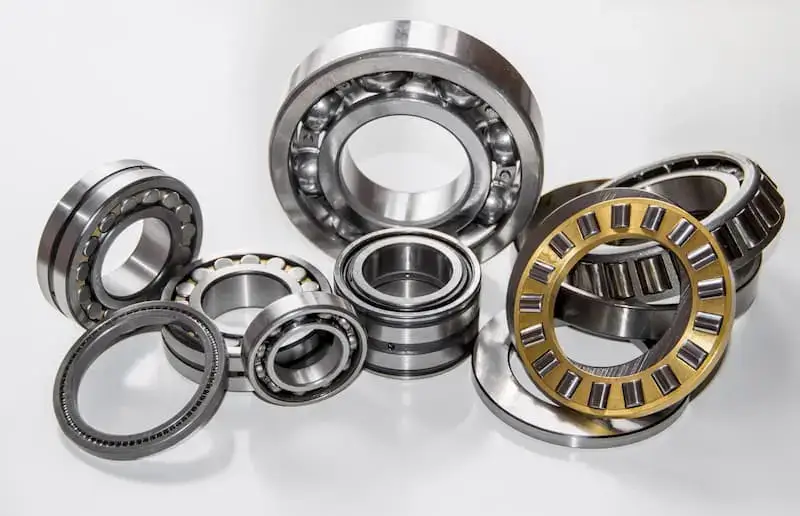Why the bearing will be damaged?
As a very important part of gearbox, bearings should be used correctly. Here is our analysis of bearing damage, there are 9 main causes as follows.
- Peel and burn
- Crack defect
- Cage broken
- Abrasions and jams
- Rust and corrosion
- Abrasion
- Electric erosion
- Indentation bruise
- Creep
Let’s use a chart to analyze the causes and solutions.

| Item | Phenomenon | Cause | Solution |
|---|---|---|---|
| Peel off |
Running surface peeling Obviously convex and concave after peeling |
• Improper use under excessive load • Poor installation • Poor accuracy of shaft or bearing housing • Too small clearance • Foreign body intrusion • Rust occurs • Decrease in hardness caused by abnormal high temperature |
• Re-study the conditions of use • Reselect bearing • Reconsider the clearance • Check the machining accuracy of the shaft and bearing housing • Study the design around the bearing • Check the method of installation • Check lubricant and lubrication method |
| Burn |
The bearing heats up and changes color, and the bearing cannot rotate |
• The clearance is too small (including the clearance of the deformed part is too small) • Insufficient lubrication or improper lubricant • Excessive load (excessive preload) • Roller deflection |
• Set proper clearance (increase the clearance) • Check the type of lubricant to ensure the amount of injection • Check the conditions of use • Prevent positioning errors • Check the design around the bearing (including heating of the bearing) • Improve bearing assembly method |
|
Crack defect |
Partial gap And cracked |
• Excessive shock load • Excessive interference • There is a large peeling • Friction cracks • Poor accuracy on the mounting side (too large corner round) • Poor use (using a copper hammer to insert large foreign objects) |
• Check the conditions of use
• Set proper interference and check material • Improve installation and usage • Prevent friction cracks (check lubricant) • Check the design around the bearing |
| Cage broken |
Rivet loose or broken Cage broken |
• Excessive moment load • High-speed rotation or frequent speed changes • Poor lubrication • Jammed in foreign objects • High vibration • Poor installation (installation in an inclined state) • Abnormal temperature rise (resin cage) |
• Check the conditions of use • Check lubrication conditions • Re-study the choice of cage • Pay attention to the use of bearings • Study the rigidity of the shaft and the bearing housing |
| Abrasions and jams |
Rough surface, accompanied by tiny dissolution The scratches between the flange of the ring and the end of the roller are called jams. |
• Poor lubrication • Foreign body intrusion • Roller deflection caused by bearing tilt • Oil fracture on the rib surface caused by large axial load • Rough surface • Large rolling element sliding |
• Re-study lubricants and lubrication methods • Check the conditions of use • Set appropriate pre-pressure • Strengthen sealing performance • Normal use of bearings |
| Rust and corrosion |
Partial or all rust on the surface Rust on the pitch of rolling elements |
• Poor storage condition • Improper packaging • Insufficient rust inhibitor • Intrusion of water, acid solution, etc. • Hold the bearing directly by hand |
• Prevent rust during storage • Strengthen sealing performance • Regularly check the lubricating oil • Pay attention to the use of bearings |
|
Wear |
Surface wear, resulting in dimensional changes, often accompanied by abrasion, abrasion marks |
• Foreign matter in the lubricant • Poor lubrication • Roller deflection |
• Check lubricant and lubrication method • Strengthen sealing performance • Prevent positioning errors |
|
Electric erosion |
The rolling surface has a pit-like pit, and further development is in the shape of a corrugated plate |
• The rolling surface is energized |
• Making current bypass valve • Take insulation measures to prevent current from passing through the inside of the bearing |
|
Indentation Bruise |
Stuck in solid foreign objects, or surface pits caused by impact and scratches on installation |
• Intrusion of solid foreign objects • Click in the release sheet • Impact and fall off caused by improper installation • Install in an inclined state |
• Improve installation and usage methods • Prevent foreign matter from entering • If it is caused by sheet metal, check other parts |
|
Creep |
The inner diameter or outer diameter is slippery, causing the mirror surface or discoloration, and sometimes it gets stuck |
• Insufficient interference at the fit • Insufficient sleeve tightening • Abnormal temperature rise • Excessive charge |
• Re-study the amount of interference • Study the conditions of use • Check the accuracy of the shaft and bearing housing |
